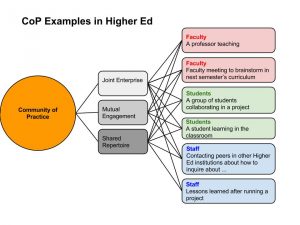Early on Wenger mentioned “We define who we are by the ways we experience ourselves through participation as well as by the ways we and others reify ourselves.” Far too often people say nobody affects who they are as a person. To which we would argue is not true. The way we define our identity has a lot to do with the world around us and how we react and respond to other people asserting their identity.
In the Wenger reading I got caught up in the way trajectory was defined. The world is more networked than it has ever been before, so it makes sense how we, as people identify become networked as well. Wenger suggests trajectory in not a fixed path nor is it a fixed destination but continuous motion. The former definition of trajectory falls more in line with past definitions of identity, static and rigid. Thinking about how you can have “multiple” identities thanks to the power of anonymity on the Internet a more fluid definition of identity works. A definition where you are not only identify with your physical characteristics, but also your interest, your thoughts, and the content you create.
An interesting part of Youth, Identity, and Digital Culture was the dichotomy between Giddens’s and Foucault’s views. The true nature of identity probably lies somewhere in between these two opposing philosophies. The individual is shaped by societal norms and constricted by society’s expectations, which can be both good and bad. Society deems what is acceptable behavior, which can act as a chilling effect on undesirable behavior but also any behavior at all that deviates from the norm. The Internet just accelerates this process by providing a more effective feedback loop.
